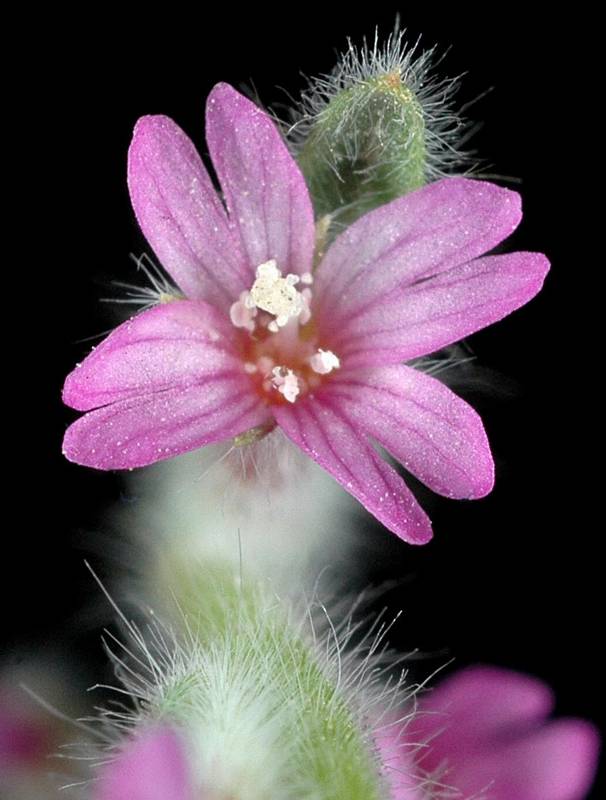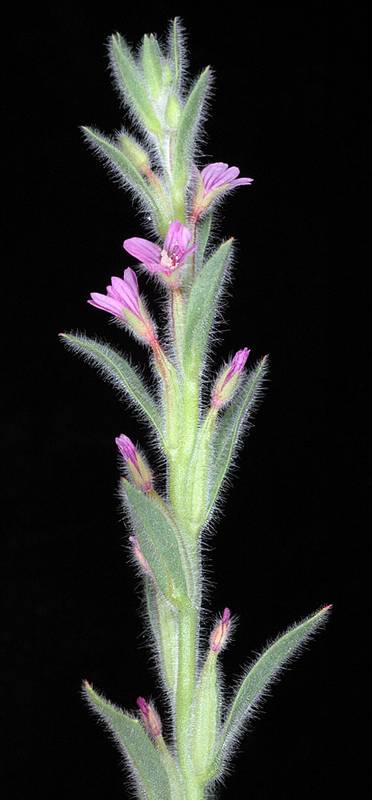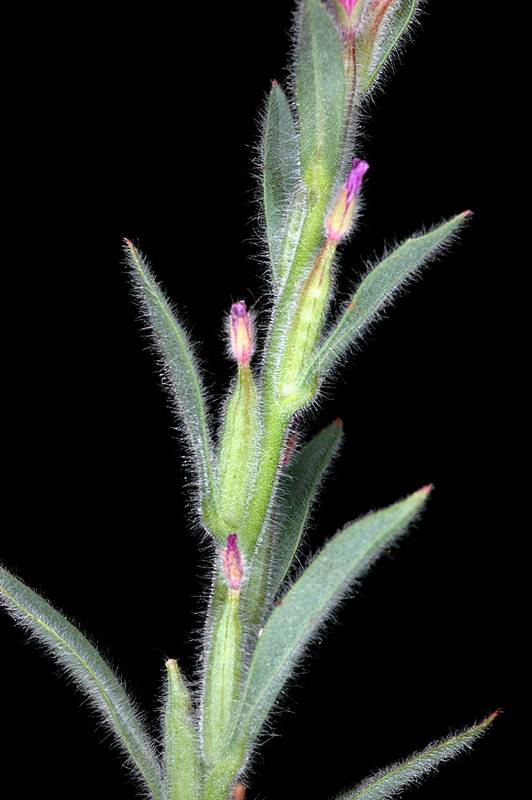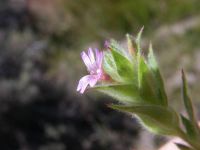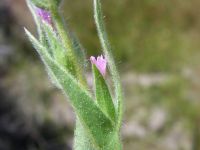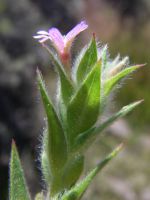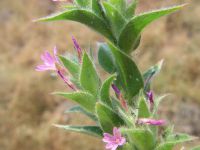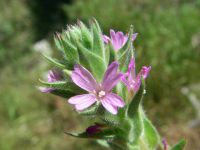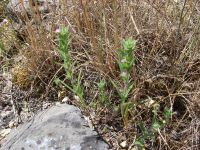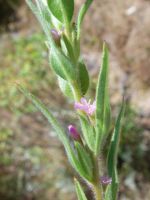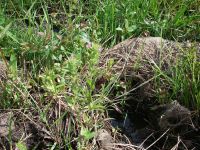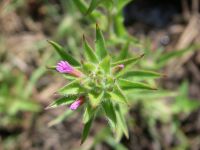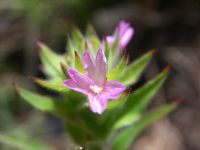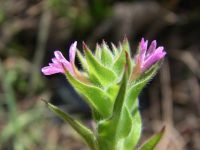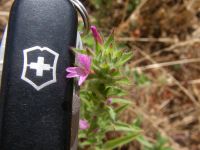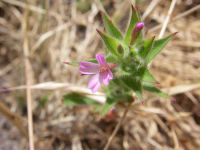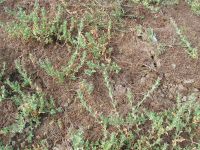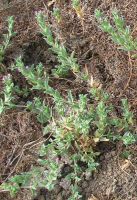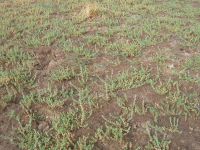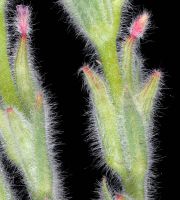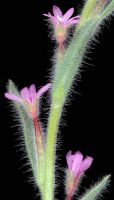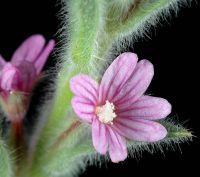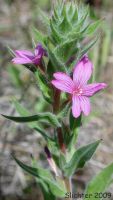Distribution: Occurring east of the Cascades crest in Washingtpn; southwestern British Columbia to California, east to Idaho and Nevada.
Habitat: Places that are soggy with standing water in winter and spring, drying in summer.
Flowers: June-July
Origin: Native
Growth Duration: Annual
Conservation Status: Not of concern
Pollination: Bees, flies
Annual, the stem 1-5 dm. tall, usually branched from the base, spreading only slightly, grayish with dense, soft, straight hairs.
Leaves alternate, numerous, evenly spaced, linear or narrowly lanceolate, entire or remotely denticulate, 1-4 cm. long and 1-2.5 mm. broad.
Flowers axillary and sessile, the floral bracts similar to the leaves but smaller and entire; calyx tubular, 4-lobed; petals 4, borne on the calyx, pink or purplish, about 2 mm. long; ovary inferior, 4-celled; stamens 8, of two lengths.
Capsule 4-celled, 6-11 mm. long, curved, short-beaked.
Publication: Phytologia 73(6): 458 [1993]. 1992.
PNW Herbaria: Specimen records of Epilobium torreyi in the Consortium of Pacific Northwest Herbaria database
WA Flora Checklist: Epilobium torreyi checklist entry
OregonFlora: Epilobium torreyi information
E-Flora BC: Epilobium torreyi atlas page
CalPhotos: Epilobium torreyi photos

